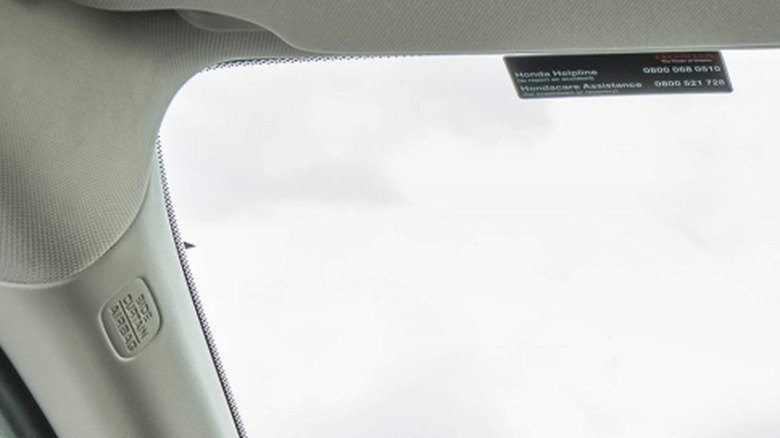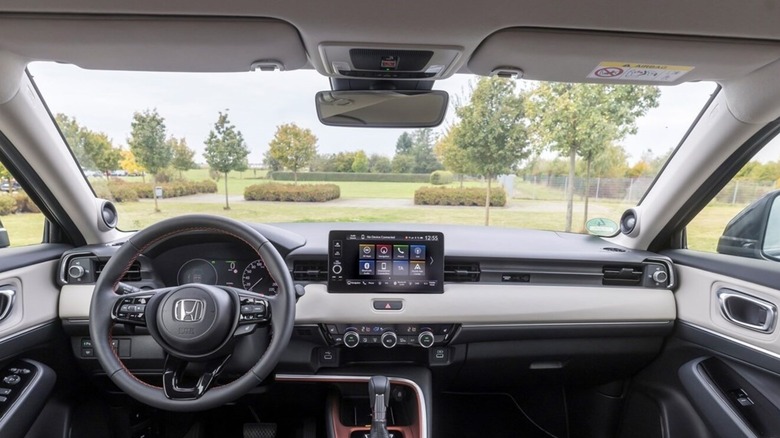Here's What Those Little Triangles On Your Honda Windshield Are For
If you're an eagle-eyed Honda driver, or a frequent bored passenger of one, you might have noticed tiny triangles around the little black dots on your car's windshield. They aren't just a weird design feature of Honda cars: those triangles might have even helped to keep you safe, particularly while the car is turning or when navigating tight spots.
Hondas tend to have two super small triangles on the left and right side of the windscreen, towards the upper third of the glass. They're placed just above a driver's typical line of sight to help subconsciously guide their gaze to stay even and level while driving. It borrows ideas from cognitive psychology to help drivers stop their eyes from drifting up or down unnecessarily, and to encourage side-to-side scanning instead, allowing for more precision while driving.
Honda started rolling out this nifty car safety feature in 2010 after conducting research to test the triangles out in practice. Their research suggested that better drivers held a flatter gaze and scanned roads horizontally while driving. Less proficient drivers, on the other hand, largely behaved in the opposite way by scanning too much in multiple directions, leading to them becoming distracted. Installing the triangles on test drives seemed to help manage this problem by subconsciously guiding drivers' gazes back towards the desired areas of the road, while also making them more aware of the size and width of their car.
The triangles are intended to work subliminally using psychological methods
Sitting at around a quarter of an inch in size, Honda's tiny windshield triangles are so small you could blink and miss them. Their minuscule size is a key feature: if they were too big, drivers could consciously notice them on the car's windshield while driving, meaning that they wouldn't work subliminally. For something to work subliminally, it needs to be just subtle enough that the person affected by it doesn't notice it. Moreover, if the triangles were too big, they might actually become obstructions by blocking the driver's line of vision. Or, the driver may become so distracted trying to line the triangles up with their movements that they don't focus enough on the road anyway.
As well as Honda's original research testing out the efficiency of windscreen triangles, similar findings have been made in cognitive psychology. Driver behavior is a common research area of attentional psychology. It's a clear way that research can be made useful through application, by improving driving conditions and overall road safety through cognitive management.
Drivers can easily face something called cognitive overload. Cognitive overload happens when somebody has to consider too many things at once, often with the information that's coming at them being disorganized. This overload can be overwhelming and compromises someone's ability to use mental processes like attention effectively. This happening to drivers can be dangerous, so methods of reducing cognitive load are useful. Honda's triangles are an example of one of these methods, although more rigorous scientific experiments would help to put them to the test to ensure their efficiency.

